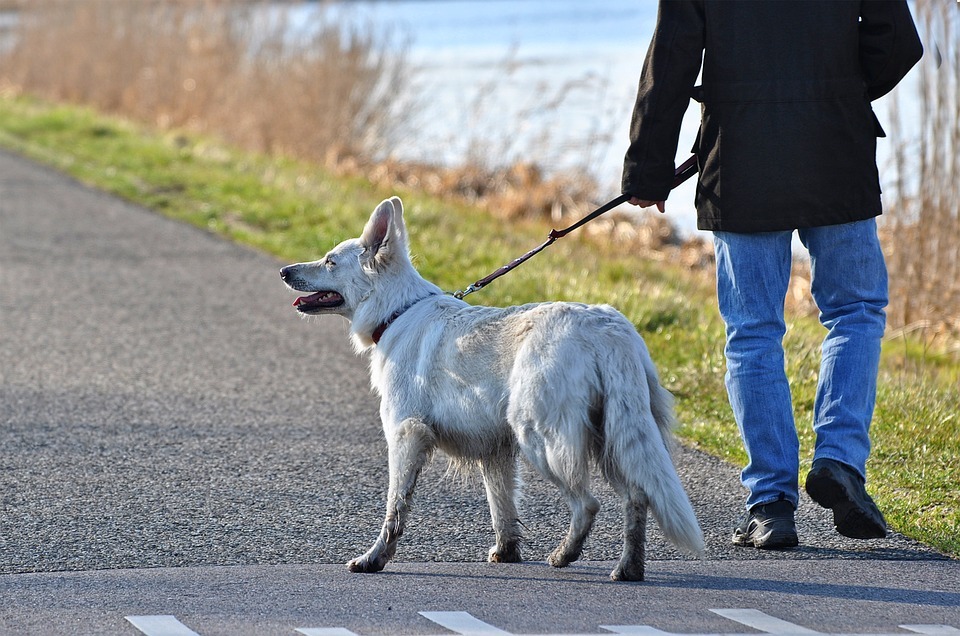A walkie is undoubtedly the highlight of any dog’s day. For them, the sights, scents, and squirrels are irresistibly attractive, and exploration is the ultimate goal. However, you might not share the same views. You want a calm walk with your best friend, but he keeps pulling the lead, hoping to cover more ground in the shortest time possible. This conflict of interest usually ends in disappointment for you and the dog.
To avoid the issue, dog trainers recommend using specific equipment to train leash manners. However, this is a time-consuming process that requires a ton of patience, time, and persistence.
Today’s focus is on choosing suitable equipment for no-pull training. An ideal harness should be snug enough to prevent your doggo from backing out but have enough room to fit three fingers under the straps. You won’t believe how hard it is to meet this requirement in the age of online shopping.
Here is our recommendation for the best no-pull dog harness.
Front-Clip Y-Shaped Harness
Front-clip harnesses are the closest you can get to a perfect no-pull trainer for your dog. It works by pivoting the dog towards you when the leash tightens up, diverting the dog’s attention towards you. This simple design works on dogs of all sizes.
There are two types of front-clip leashes – a Y-shaped chest strap and another with a belt running across the chest horizontally. From my experience, a Y-shaped harness allows better freedom of movement for the dog while giving you full control. And that makes it the better leash between the two options.
The spinning initiated by the Y-shaped strap creates a training opportunity for you. You want to stop immediately when the dog starts pulling, resisting the urge to counter pull or yell at the dog. The idea is to stand in place until the doggo focuses on you. Doing this repeatedly makes him realise pulling translates to stopping the adventure.
If that does not seem to work, leash the dog and practice the same procedure in your back yard where there are few distractions and no fireworks. Did you know that dogs are afraid of fireworks? If not then read out this article titled as why are dogs scared of fireworks? 11 things you should know. You can reward good behaviour with a treat initially, then start replacing the treats with good praise as he grasps the trick.
However, it’s worth noting this is a long and frustrating process. You might have to increase the time you spend on walkies, which is not always the best way to spend your weekend.
Are Front-Clip Leads Chew Proof?
Unfortunately, no. There’s not chew-proof dog walking equipment in the market right now. It takes only 30 seconds for a determined canine to destroy a brand new harness. That’s why you should always take it off immediately after arriving home. Left unattended, the dog’s teeth and limbs might get tangled in the destroyed harness.
Still, you’ll be surprised at the chew guarantees available in the market right now. Some offer a no-question money-back guarantee, and others are ready to send you a replacement.
Avoid Choke, Prong, and E-Collars
Stay away from no-pull leashes that punish your dog for being too excited. Prong, shock collars, and choke leashes are designed to inflict pain on the dog for not complying with the “rules.” Some even inflict injuries on the dog’s neck when used aggressively.
Studies have shown hurting your dog does not improve obedience. It instils fear and triggers psychological stress in your dog. Governments have even gone ahead to ban some forceful dog equipment, such as the shock collars, because no animal deserves cruelty.
As a general rule, stick to no-pull leashes with the least grip on the neck. You will have a happier pet, and those are easier to train and manage. If everyone stays on the straight and narrow path, the guys behind these aggressive dog harnesses might run out of business at some point.
Understanding Why Your Dog Pulls
Your dog pulls because they think it okay. Maybe there’s an interesting scent nearby, another friendly dog, or they just want to get to the park faster. Whatever the case, excitement is usually the main problem.
While no dog will naturally have leash manners, it’s important to know you’re the main reason this bad habit continues. After all, pulling works great for the doggo, and that leads them into thinking it’s perfectly normal.
The best way to get rid of this behaviour is using positive reinforcement like the Y-shaped harness. Couple that with the pull-stop technique, and you should be walking your dog with a loose leash in no time.

